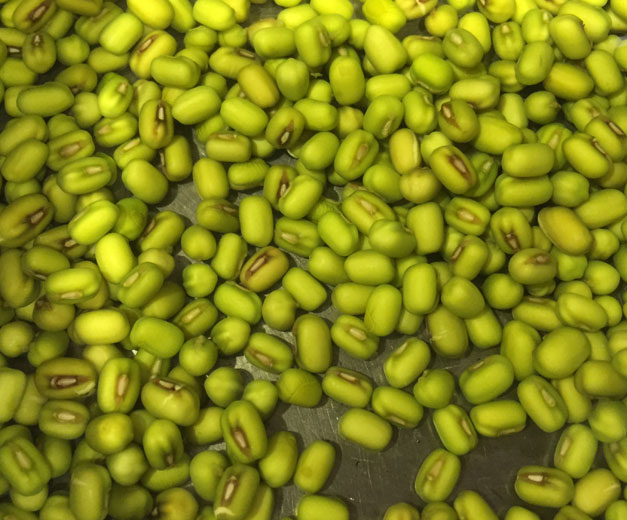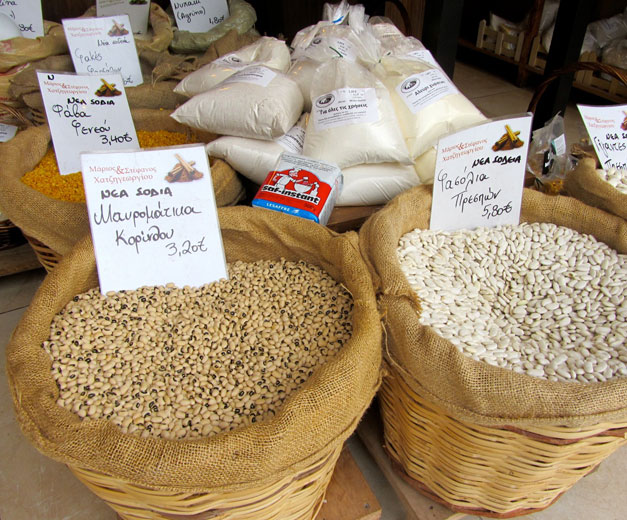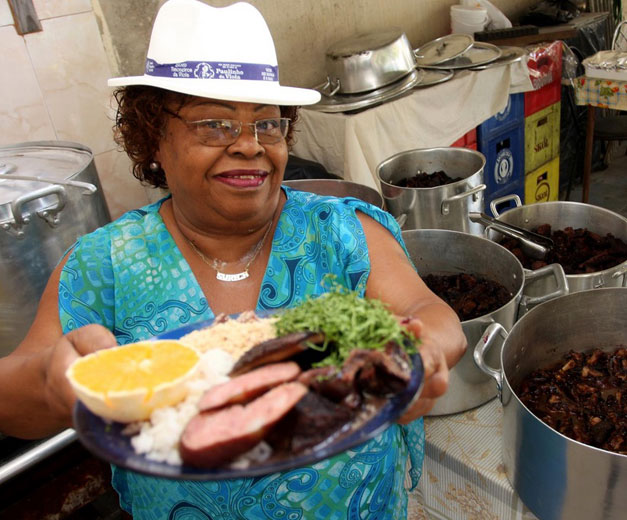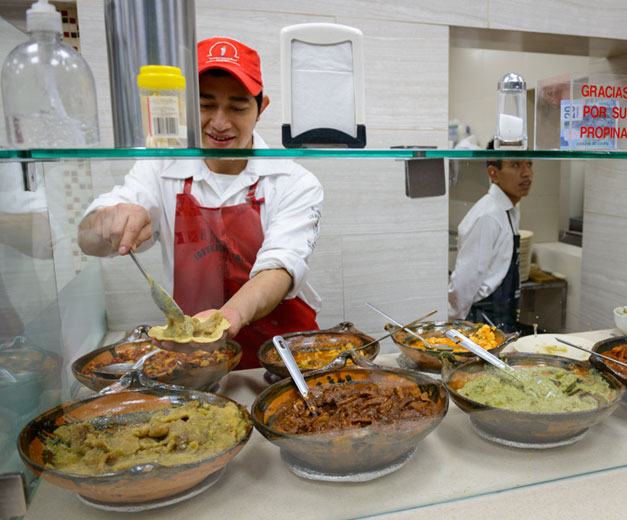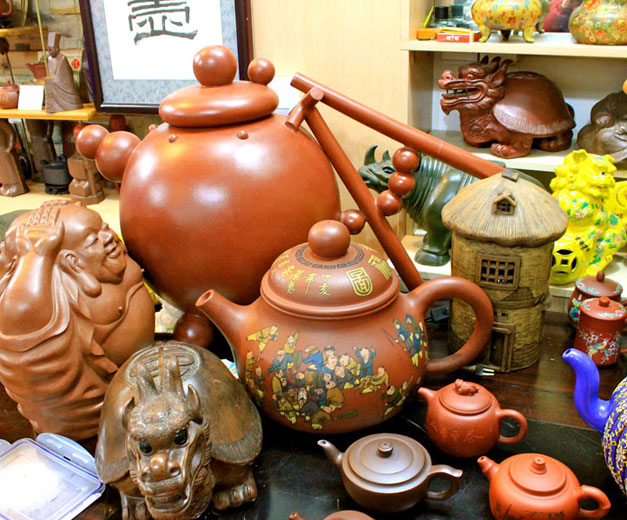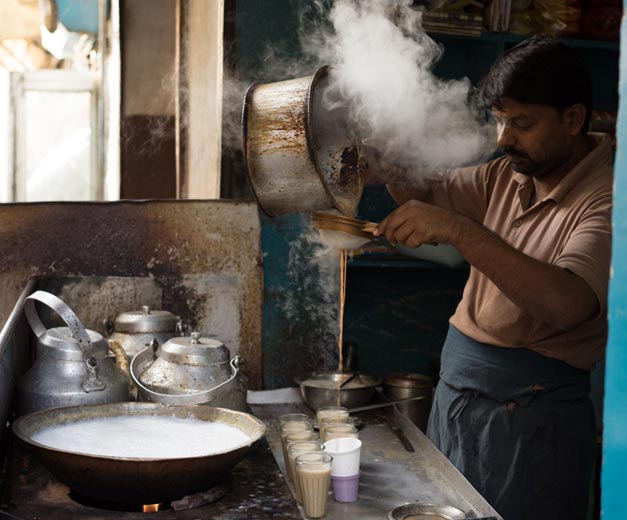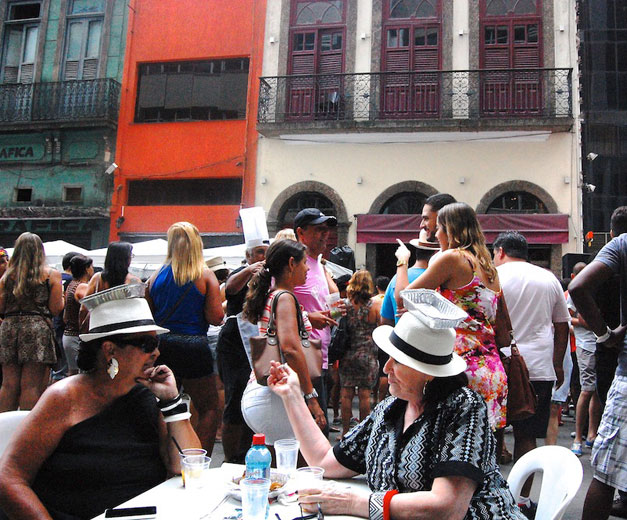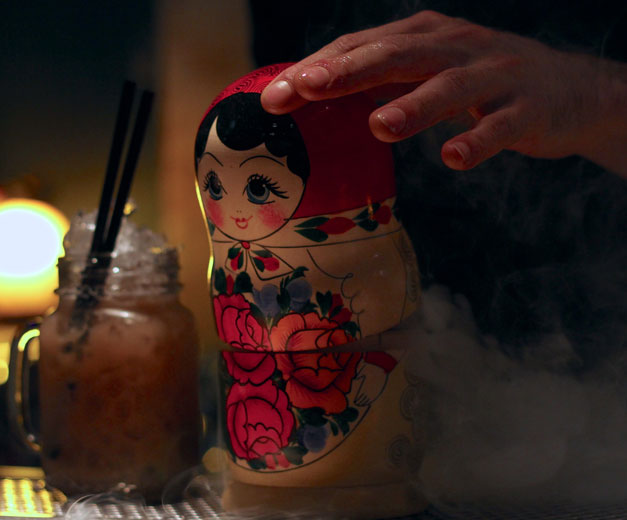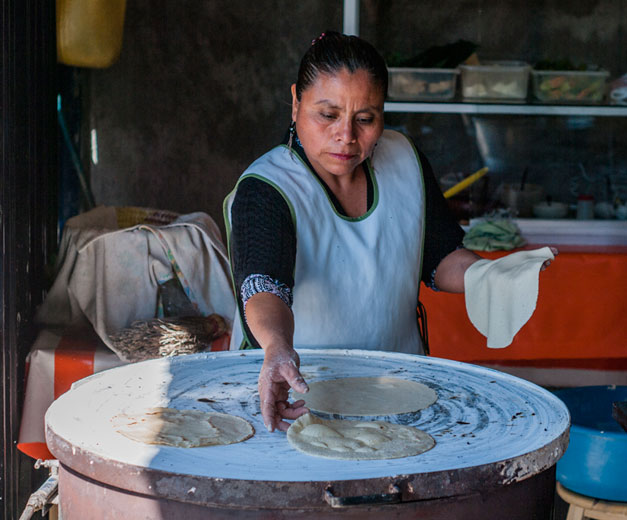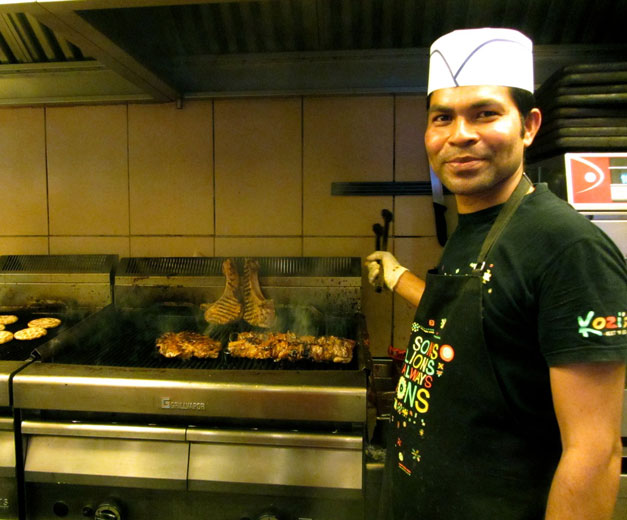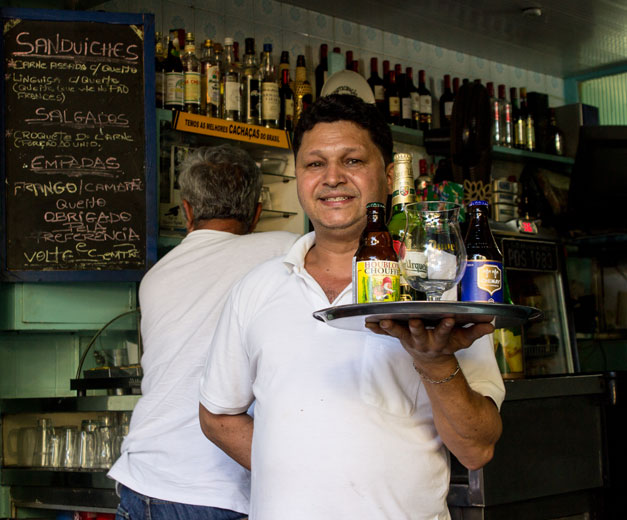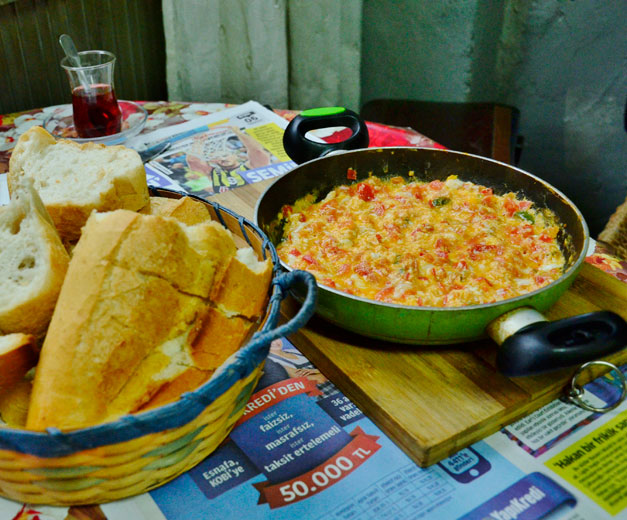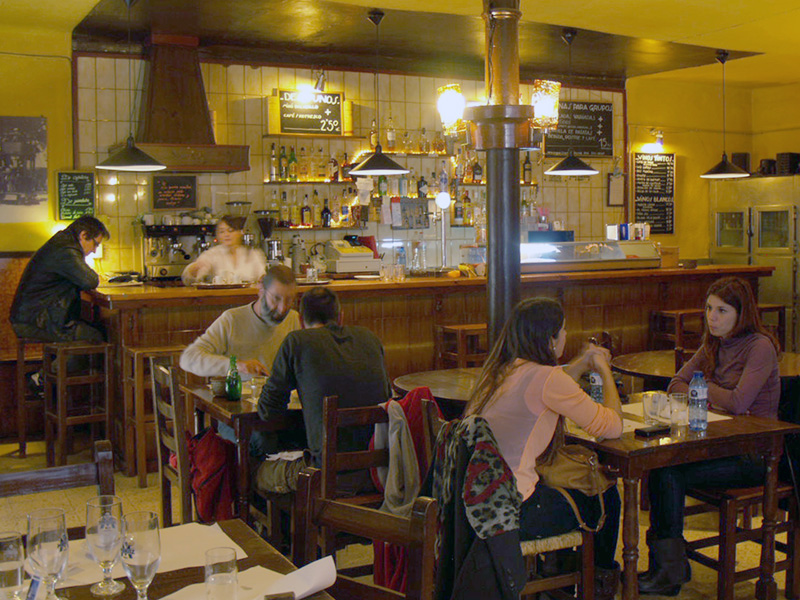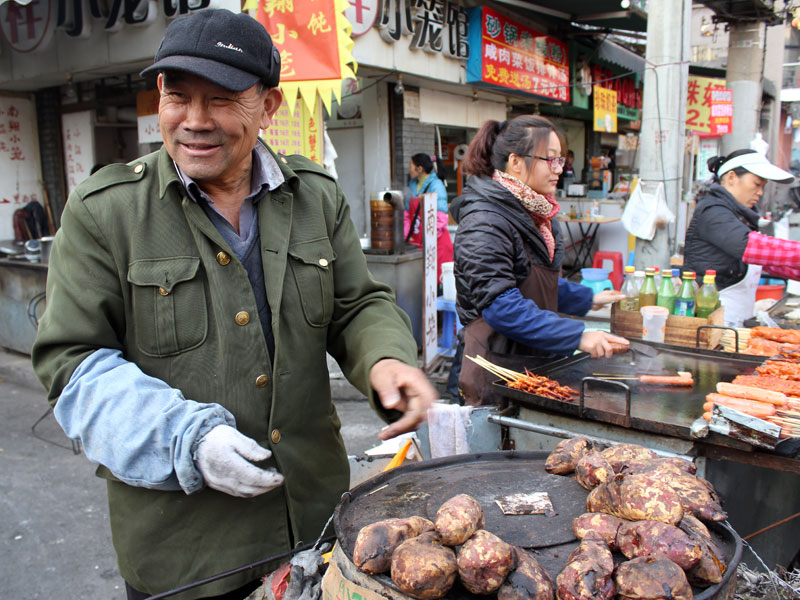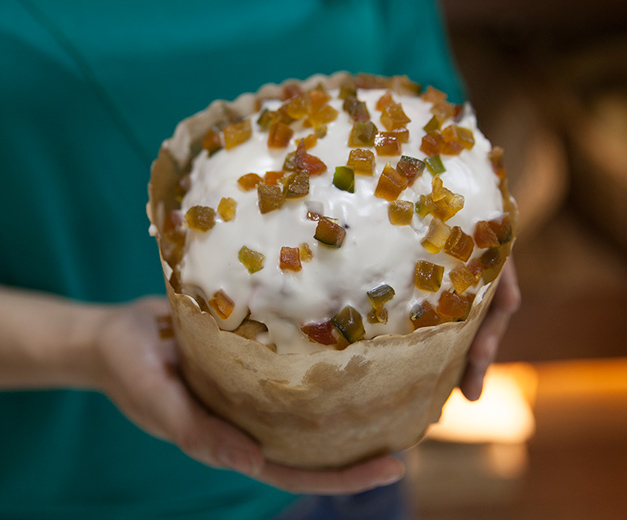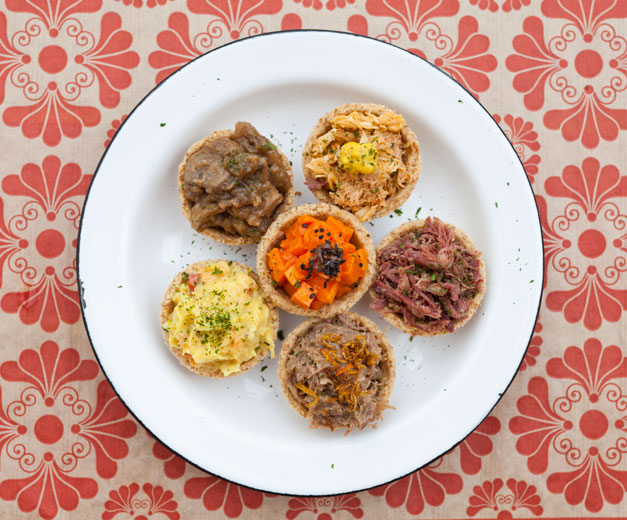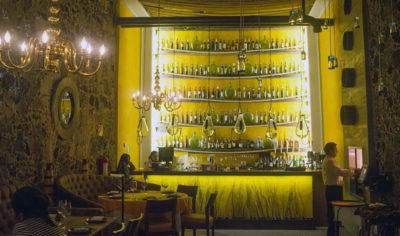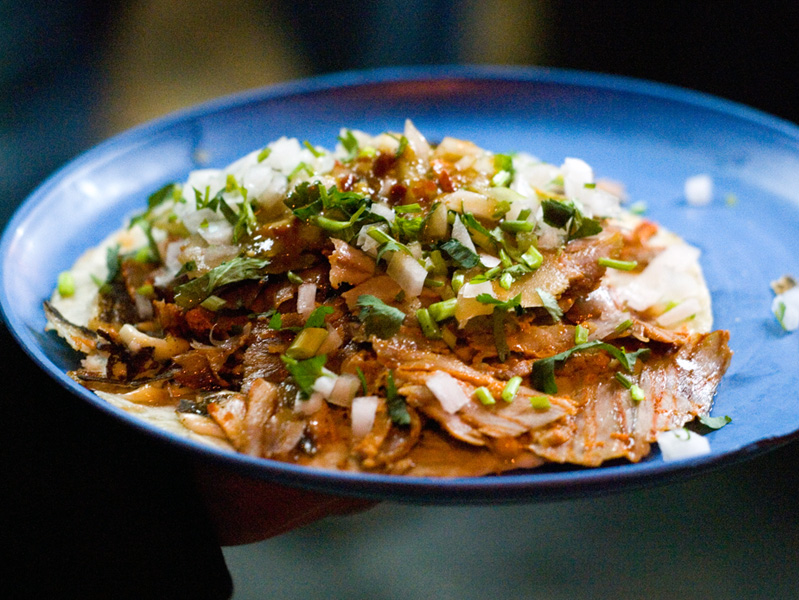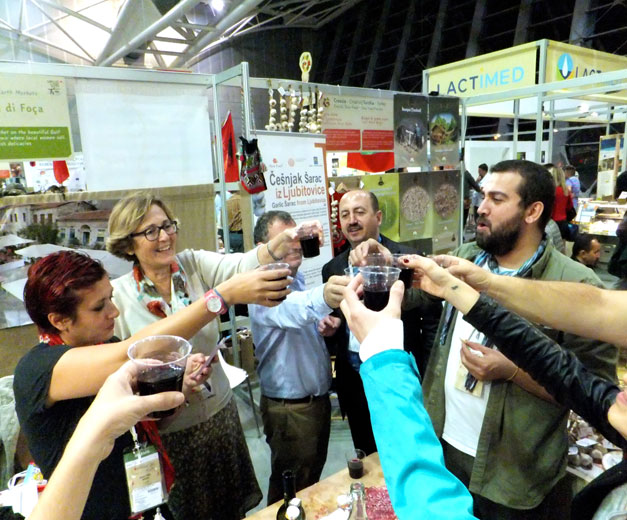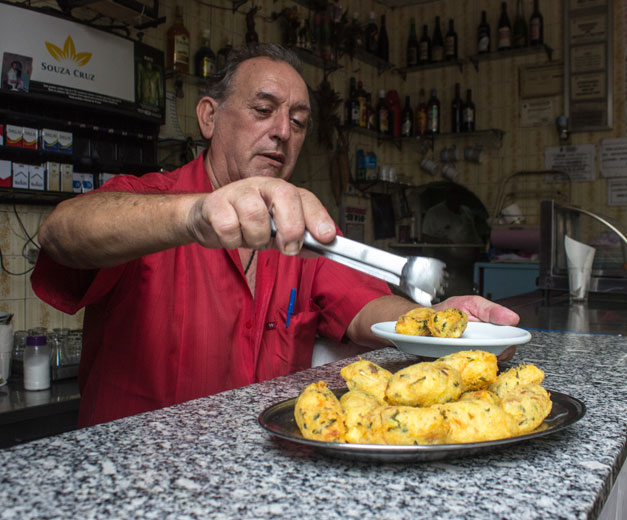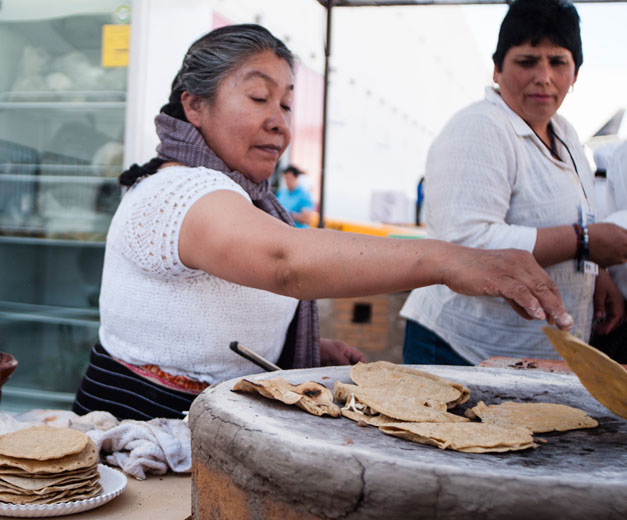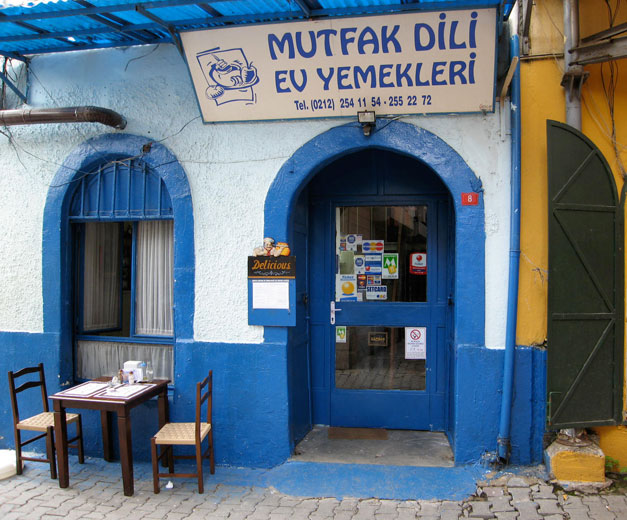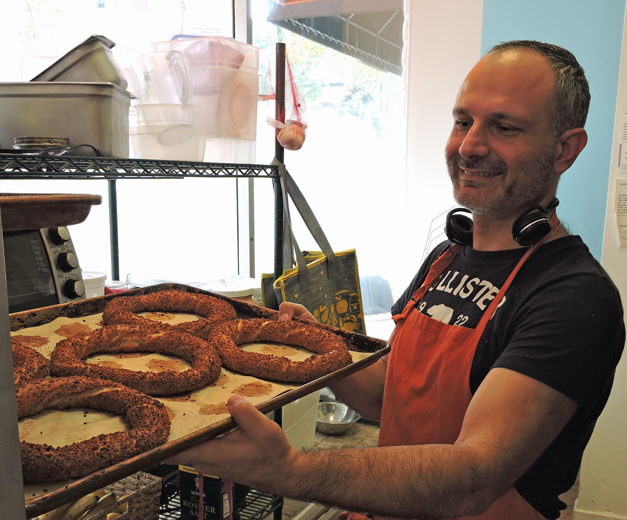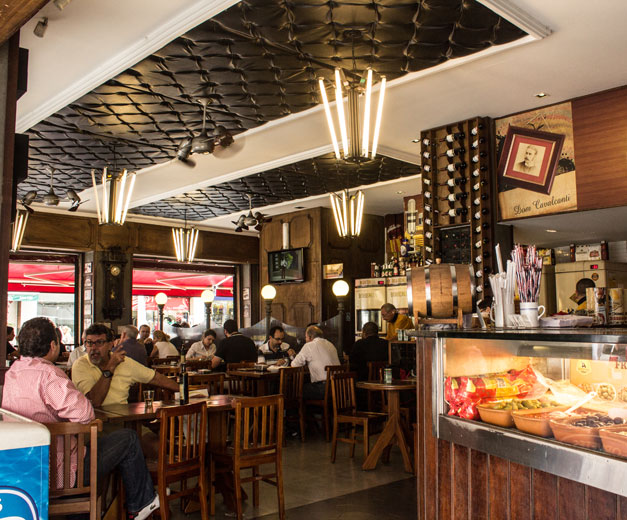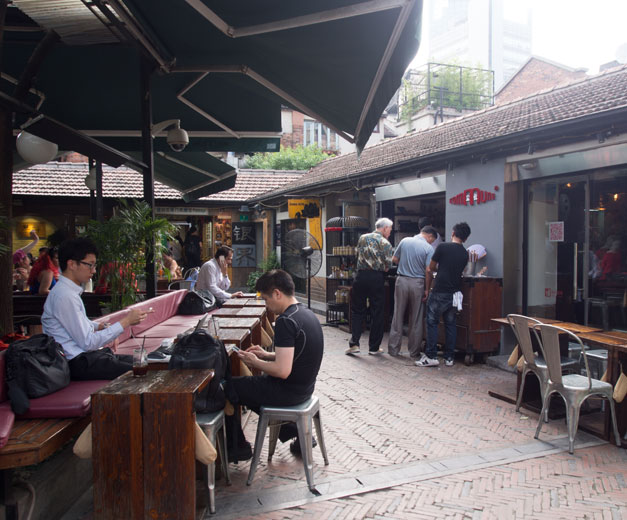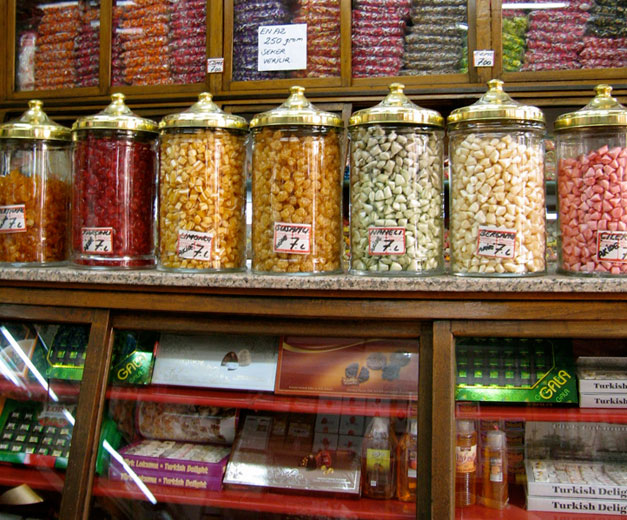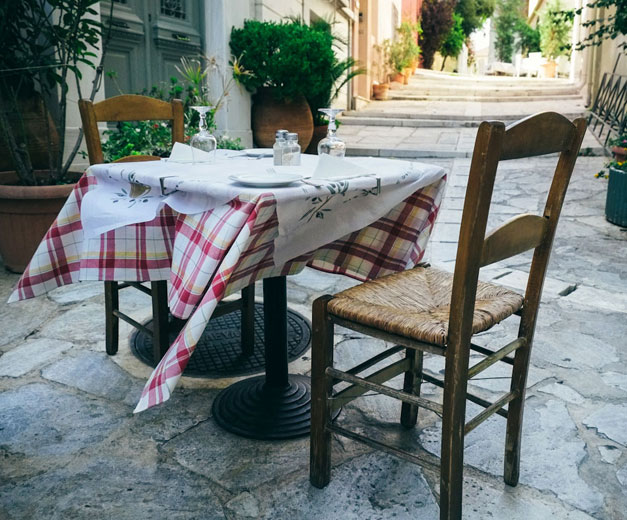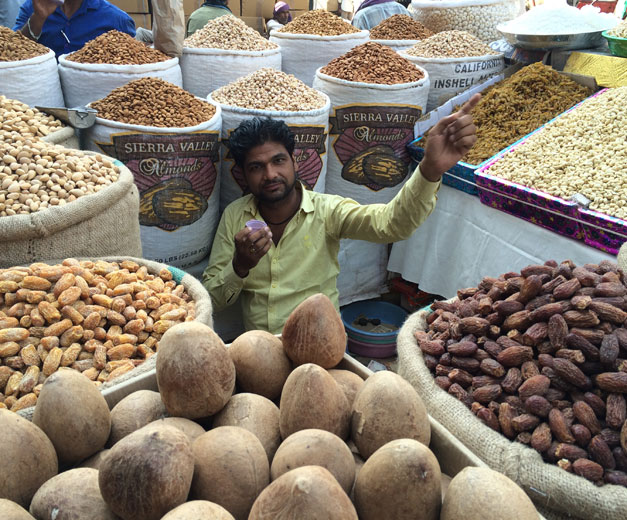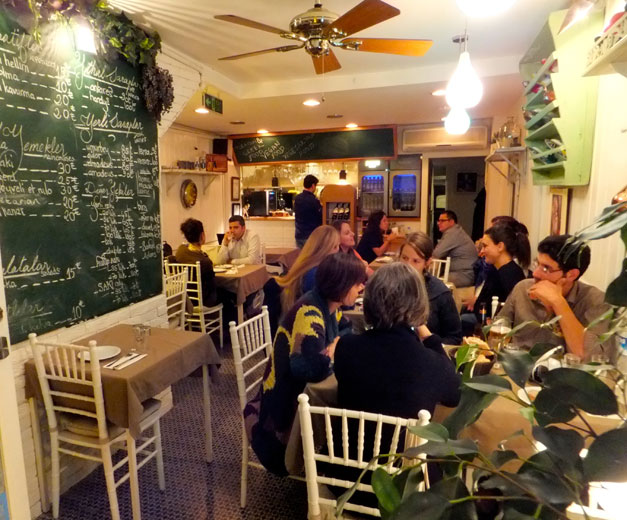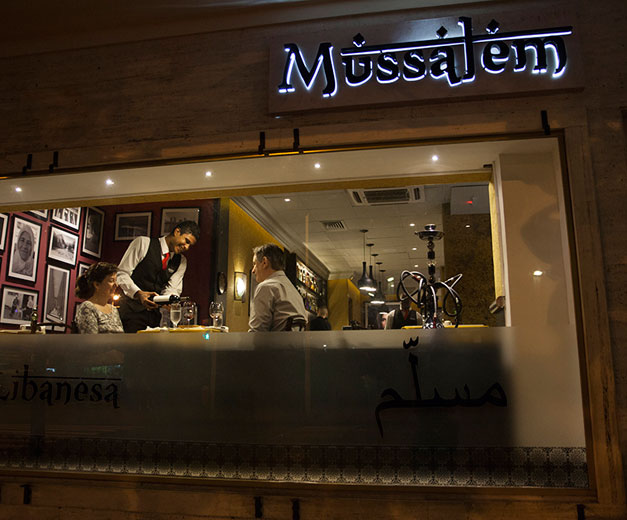We can't find the internet
Attempting to reconnect
Something went wrong!
Hang in there while we get back on track
Search results for
Athens
Bean Week: Greece's National Treasure
If there is one single food family that shows off the breadth and extent of the collective Greek culinary imagination, it has to be the humble legume. Together with wheat, beans of all kinds, along with lentils, chickpeas and split peas, form the very foundation of the Greek diet and have done so since Neolithic times.
Read moreRio
Bean Week: Rio's Stew and Samba Parties
Everyone knows that Carnival takes place in February. But in Rio, the party starts long before then. As early as November, sometimes even the end of October, the public can take part in ensaios, or rehearsals, that Carnival groups and organizations put on all over town.
Read moreMexico City
Taquería El Jarocho: All Filler
There’s something limitless about tacos in Mexico. All you need for a good taco is a soft corn tortilla – handmade are a plus – and a filling, which can take the form of meats such as al pastor, carnitas, mixiote, fish, vegetables and, lesser-known outside of Mexico, guisados.
Read moreShanghai
Tea in China: Reading the Leaves
Although coffee culture is booming in China, the Middle Kingdom is still the world’s biggest consumer and producer of tea leaves. The drink is so important that one Chinese proverb claims, “It is better to be deprived of food for three days, than of tea for one,” and tea is included on the list of the seven necessities of Chinese life (along with firewood, rice, oil, salt, soy sauce and vinegar). Chinese joke that you can study tea for your entire life and still not learn the names of all the different kinds. But for tea newbies, there are four basic types of the brew to help slake your thirst for knowledge.
Read moreBarcelona
Lata Berna: The Tin Man
The name of this appealing Gràcia eatery is a play on words, an amalgam of la taberna, or “tavern,” and lata, or “tin.” Owner and head chef Juanjo Martínez has dedicated his restaurant to the culture of canned food and other uncanned treasures that are linked to traditional Spanish tapeo and rituals like vermut hour, which always include preserved foods.
Read moreElsewhere
Crunchy Snacks and Hot Tea: Winter in Old Delhi
The official cold blew in last month. Winds pierced thick cotton clothing through to the skin, into the body and further into the bone while we were driving in the open rickshaw, after the sun slipped down. Then it rained and thundered, the kind that makes one jump with the clap. When the morning air hit the airways, balminess laced with pollution infiltrated the atmosphere. To get and stay warm is work here. We seek out the afternoon sun to heat our bodies and dry our clothes. Another way to keep the chills at bay is to ensure a supply of dense foods and hot liquids.
Read moreRio
Samba to Go: Rio's First Gastronomy-Themed Carnival Party
Composer Pecê Ribeiro is famous for writing songs that spread the glory of Portela, one of Rio’s oldest and most beloved samba schools in the city’s North Zone. But his newest lyrics tell another story. “Bring your little takeout box over here, and I will put a delicious snack in it,” the song begins. “I won’t put too much pepper so it doesn’t burn.” Chorus: “Love, love, gastronomy.”
Read moreBarcelona
Bar 68: Chefs' Night Out
Chefs and dedicated diners throughout Barcelona are thrilled to proclaim, “Bar 68 is reborn!” For more than 10 years, this well-known and well-worn dive bar has served locals and travelers alike. Under new ownership, the old favorite has been refreshed with new staff, an appealing new menu and some of the best cocktails in the city.
Read moreOaxaca
Eating Oaxaca: A Visit to Mexico's Culinary Mecca
We’ve written previously about the immense diversity of Mexican cooking: Every region has unique traditions that build upon ingredients common to much of the country. And yet there are a few regions that stand out for the variety and vividness of the flavors, colors and tastes found there.
Read moreAthens
Kozi's: Out of Africa
It’s Friday, 5:30 p.m., an hour one usually associates with tea and biscuits, or in Greece a frappé, yet Kozi’s, a South African restaurant, is pleasantly abuzz with diners tucking into massive steaks and inch-thick burgers. As we stand by the counter waiting for the owner to appear and watching the meat sizzling on the grill, we can’t help smiling. The young woman near the till asks, “Why are you smiling?”
Read moreShanghai
Bamboo Sichuan: The Big Chili
[Editor's note: We're sorry to report that Bamboo Sichuan has closed.] The temperature has officially fallen off the register, and there are days when Shanghai seems bleak indeed, the cumulus clouds of winter hugging the skyline uncomfortably close.It’s times like these when we look to western China for inspiration, and nothing but Sichuanese-style roasted fish (四川烤鱼, sìchuān kǎo yú) will do to lift the spirits and drive away the bleary stagnations of cold, wet weather. This dish is common in Chengdu, the heart of Sichuan and an undisputed food center of the Middle Kingdom. Located in the Red Basin and hemmed in by imposing peaks that wander towards the Himalayan foothills, this cheerful culinary capital – much like Shanghai – in December boasts an icy humidity that seeps into the joints and refuses to leave.
Read moreIstanbul
First Stop: Charles King's Istanbul
Editor’s note: In the latest installment of our recurring feature, First Stop, we asked Charles King where he stops first for food when he heads to Istanbul. King is professor of international affairs and government at Georgetown University and the author of Midnight at the Pera Palace: The Birth of Modern Istanbul and other books. Istanbul is famously a city for strolling, but the steep hillsides of the Bosphorus and the twisting streets of the old city south of the Golden Horn can leave you either breathless or plain lost. Kuzguncuk, on the Asian side of the city, has the advantage of allowing you to explore a magnificent neighborhood via a short walk along a plane tree-shaded main street, with only minimal roaring cars and plenty of lazy street dogs to accompany you.
Read moreRio
Bar Rebouças: The One-Man Show
When you first spot him, he’s opening a bottle of beer behind the counter. Two seconds later, he’s already outside the bar, preparing a table on the sidewalk for a newly arrived customer. You blink your eyes and … there he is, writing up a check and making change. A moment later, he’s asking you if everything’s okay, checking whether your bottle of beer is still full, gently inquiring as to why you haven’t yet ordered that sandwich he knows you love. And if he happens to disappear for a few minutes, you can be certain he’s delivering some beer a few blocks away.
Read moreTokyo
Naniwa Café: Fortune Fish
It’s always tempting to try and take on all three major museums in Tokyo’s Art Triangle in one day. It would be easy to be overwhelmed by the delicious treasures of the National Art Center Tokyo, the Suntory Museum of Art and the Mori Art Museum, so we usually opt for just one and head to Naniwa afterwards for a pot of tea and their delicious taiyaki, a popular form of Japanese sweets (wagashi).
Read moreIstanbul
İsmail Amca's Menemen: Eggstra Special
The government’s billion-dollar Tarlabaşı 360 project aims to gentrify this area. Even with its seedy streets full of young ruffians and Syrian refugees, Tarlabaşı oozes with a charming ambiance like no other. Its beautiful architecture, dating back to Ottoman times, is covered in layers of soot and filth that cover unmistakable beauty.
Read moreBarcelona
Casa Pagès: To Grandma’s House We Go
Not far from the Gràcia neighborhood’s glittering Paseo de Gràcia can be found a completely different world of narrow, unassuming side streets. Once populated by Catalan Gypsies, the area is fondly remembered as one of the cradles of rumba catalana, a popular fusion of flamenco, mambo and rock and roll, and as the birthplace of Antonio “El Pescaílla” González, a legendary flamenco guitarist who was one of the genre’s founding fathers.
Read moreShanghai
Ask CB: Warming Up with Traditional Chinese Fare?
Traditional Chinese Medicine (TCM) is all about balancing your yin and yang, a system that involves dietary practices as well as exercise, massage, acupuncture and herbal medicine. Winter is considered a “yin” season, meaning that it is cold and damp, and you should therefore eat warming, or “yang,” foods to balance out the external conditions.
Read moreIstanbul
Best Bites of 2014: Istanbul
Editor’s note: To cap off our annual review of the year’s best eating experiences, we’ve unleashed our imaginations to create the Turkish food court of our dreams. After a period of protest, we finally broke down and visited the Zorlu Center, a new, high-profile shopping mall in Istanbul and a showcase of international brand names, from Fendi to Jamie Oliver. Our initial attraction was the promise of a particularly well-kept playground, but while we were there, we visited Eataly, the all-Italian culinary emporium.
Read moreAthens
Best Bites of 2014: Athens
Editor’s note: The year is coming to an end, which means it’s time for us to look back on all the great eating experiences we had in 2014 and name our favorites among them. Pavlidis This modern-looking patisserie is located in central Athens on busy Katehaki, a street more associated with car mechanics than with any sort of food. The Pavlidis family has been in the pastry business since 1932. Famous for its galaktoboureko, this patisserie actually prides itself on its mandoles, a rock-shaped chocolate concoction with caramelized almonds. But really, it’s the kaimaki ice cream which comes in two different variations that we love most. Good kaimaki ice cream is hard to come by; it tends to be quite heavy. Pavlidis makes its version the classic – and correct – way, using buffalo milk, mastic and salepi, flour made from the root of wild orchids, which produces a milky and chewy treat. The bitter almond version is a fragrant, melt-in-your-mouth masterpiece. This is far and away our favorite ice cream in Athens.
Read moreRio
Best Bites of 2014: Rio
Editor’s note: The year is coming to an end, which means it’s time for us to look back on all the great eating and drinking experiences we had in 2014 and name our favorites among them. Ferro e Farinha We have the Fulbright Program to thank for this newcomer – a one-of-a-kind Rio dining destination. Pizza chef and New Yorker Sei Shiroma had put out a Craigslist ad looking for a roommate, and a Brazilian exchange student studying linguistics answered it. The two went from being roommates to eventually marrying. This gave Shiroma a motive to bring his mobile pizza oven down to Rio, where he gained a devoted Facebook following in spite of the very un-carioca style of dining he was proposing. (Eating with your hands, on the street? The concept does bear some similarity to the cheap drunk food of the podrões – the “rotten” food trucks that dot Rio’s streets late through the night.)
Read moreBarcelona
Best Bites of 2014: Barcelona
Editor’s note: The year is coming to an end, which means it’s time for us to look back on all the great eating experiences we had in 2014 and name our favorites among them. Can Pineda At this tiny, century-old restaurant in the neighborhood of El Clot, we ate a simple dish of guisantes lágrima (“tear-shaped peas”) with little bits of jamón ibérico, one of the most delicious culinary treasures we have had all year – and one we will remember for a long time to come.
Read moreShanghai
Best Bites of 2014: Shanghai
Editor's note: The year is coming to an end, which means it's time for us to look back on all the great eating experiences we had in 2014 and name our favorites among them. Elixir Health Pot We used to ignore the steamy glass windows of Elixir Health Pot when we walked past. “Healthy is not how we take our hotpot,” we thought with our noses in the air, ignoring the sweet smell of ginseng and spicy aroma of chili peppers simmering in pork broth. Then a trusted foodie friend asked us if we’d tried their wulao meat. Another mentioned their collagen broth a week later…. So last winter, we gathered a crew of longtime hotpot fans and headed to the healthiest steamboat in town. Turns out it’s also the best all of us had ever had, and it’s now our warming go-to as soon as the temperature drops. Best not to think too hard about all the opportunities we missed over the years; we’re more than making up for it now.
Read moreMexico City
Best Bites of 2014: Mexico City
Editor’s note: The year is coming to an end, which means it’s time for us to look back on all the great eating experiences we had in 2014 and name our favorites among them. Tacos el Patán This hole-in-the-wall eatery is located in one of the busiest commercial sections of downtown Mexico City. We found it one day while we were shopping for stuffed animals and have since returned several times. El Patán is open every day but only serves fish tacos, the best item on their menu, on Wednesdays, Fridays and Saturdays. Those days they also offer skewered shrimp and deep-fried fish quesadillas made with the same fish as that used in the tacos. The rest of the week, the taquería prepares cecina (salted beef), chicken, suadero (brisket), al pastor and longaniza (a type of sausage) tacos. But the fish taco – made from barracuda, no less – was the best of its kind that we had this year.
Read moreElsewhere
Slow Company: Terra Madre and Salone del Gusto 2014
Imagine five days filled with tasting the best food products from around the world and meeting the artisans who make them. Then add a whirlwind of political discussions, wine tastings and serendipitous meetings with fellow food enthusiasts, and you have a piece of what the biennial Salone del Gusto and Terra Madre convention offers visitors. We traveled to Turin, Italy, for the 10th convention, organized by the international Slow Food movement, to meet producers from some of the countries Culinary Backstreets covers.
Read moreRio
Bar do Seu Candinho: Cod Almighty
Bar do Seu Candinho is named after its owner, a Portuguese immigrant who settled in Rio’s Port Zone more than 40 years ago. He and his brother, Roberto, who is the cook, built this typical Portuguese botequim (a small bar that serves traditional snacks) in the mid-1960s. At the time, the area was full of workers, and they kept the bar crowded. But the economic crisis that started in the 1970s and continued through the end of the 1990s marginalized the Port Zone and the bar.
Read moreMexico City
Preservation Society: Safeguarding Mexican Gastronomy in Puebla
In November, the Conservatorio de la Cultura Gastronómica Mexicana held its second International Mexican Gastronomy Forum in the city of Puebla, about 100 kilometers east of Mexico City. We had the opportunity to attend and learn more about the importance of creating this kind of space to preserve and propagate Mexican recipes that have been cooked for thousands of years.
Read moreAthens
Sweet Beirut: Lebanon in Athens
Unless you know it’s there, you might miss this tiny shop hidden behind a bus stop on the outskirts of the northern Athenian suburb of Chalandri. Many Athens kiosks are twice, three times the size. But it’s certainly cozy, and once you’ve discovered it, you’ll keep going back, not just for the sweets – which would put a smile on the face of Scheherazade – but also for the spices, condiments, nuts, cardamom-perfumed coffee, arak and other hard-to-find Lebanese specialties, or maybe just to have a chat with the owner, Lina Tabbara.
Read moreShanghai
For a Good Claws: Hairy Crab Season in Shanghai
Hairy crab season is once again sweeping Shanghai’s diners into a frenzy, with the bristly crustaceans popping up on street corners, in streetside wet markets and, most importantly, on dinner plates. This year we’ve even seen reports of elaborate live crab vending machines hitting the streets in Nanjing and an attempt to start a black-market trade in German crabs.
Read moreRio
Curry Club: Making Music and Tikka Masala
In the 1920s, Brazilian artists and writers published the Antropofagia Manifesto. They were unconvinced by the way the Brazilian elite – in a show of low national self-esteem – attempted to deferentially imitate European and U.S. culture. The writers instead proposed a “cultural cannibalism,” a “devouring” of imported cultural expressions that would be chewed up and “reelaborated with autonomy and converted into export products.”
Read moreElsewhere
Rings around the World: The Simit Invades New York (and New Jersey)
Simit, as we’ve reported previously, has gained a foothold outside of Turkey. The enticing sesame-encrusted bread rings have an easy target in bread- and bagel-loving New York – so much so, in fact, that the simit craze has even crossed the Hudson River into New Jersey. We decided to check out the stateside version for ourselves.
Read moreRio
Dom Cavalcanti: Chicken Soup for the Brazilian Soul
This popular botequim, a small bar that serves traditional snacks and dishes, is not located in the sceniest part of Lapa, but in a quieter neighborhood, Bairro de Fátima, just a five-minute walk from where everything’s happening. Kitschy and a little too brightly lit, Dom Cavalcanti is open almost every day until three in the morning, which makes it an excellent last stop at the end of a night out before heading off to bed. And if it’s been a particularly memorable night out, some canja is most definitely in order.
Read moreIstanbul
CB on the Road: A Revived Grape Harvest in Thrace
Zeynep Arca Şallıel had a successful career in advertising in Istanbul, but in 1995 she decided to take on a daunting new challenge: taking part in the revival of small-scale viniculture in the ancient winemaking region of Thrace. “I wanted to do something with soil, something that mattered a little bit more,” she says. Her father had always dreamed of making wine, so together, they started Arcadia Vineyards. Their vineyards are planted on the 65 million-year-old eroded rock of Istranca Mountain, which creates a border between Turkey and Bulgaria. We drove two hours west from Istanbul through rolling hills of drying sunflower fields to learn how this pioneering winemaker is making great wines under difficult circumstances.
Read moreShanghai
Eating and Drinking in Tianzifang: Toilets & Noodles
Beyond the stunning juxtaposition of the Bund’s colonial architecture with some of the world’s highest skyscrapers, one of Shanghai’s most charming, local architectural experiences can be found on the southern edge of the former French Concession, in the neighborhood of Tianzifang. Slated to be destroyed to make way for (yet another) mall development in 2008, Tianzifang's artist community rallied to save the warren of original laneway houses that are uniquely Shanghainese.
Read moreIstanbul
Altan Şekerleme: More Than Just Eye Candy
Just up the Golden Horn from the Egyptian Spice Bazaar is Küçük Pazarı, a rarely explored warren of market streets and Ottoman-era caravanserais that are home to scissors sharpeners, saddle shops, vendors selling axle grease (by the vat) and purveyors of axes. From this potpourri of run-down yet extremely photogenic shops, one storefront, decorated with candy canes and Turkish delight, beckons from a distance like a foodie mirage. Welcome to Altan Şekerleme – or, better yet, Candyland.
Read moreAthens
Pasteli: Power Bar of the Ancients
The origins of pasteli, a honey and sesame bar sold everywhere in Greece from supermarkets to delis to bakeries, can be traced back to Greek and Roman antiquity. Athenaeus of Naucratis, in his Deipnosophistae (“The Dinner Experts”), written in the 3rd century A.D., mentions it many times, and references to pasteli can be found all over ancient Greek and Byzantine texts.
Read moreMexico City
La Dulcería de Celaya: Sweets Central
Mexican sweets might not be as world-famous as those from the U.S., France or Switzerland, but judging by the enormous variety of pastry, candy and chocolate made and consumed domestically, Mexicans have an insatiable sweet tooth. And chocolate, of course, is one of Mexico’s gifts to the world.
Read moreIstanbul
First Stop: Dilara Erbay's Istanbul
Editor's note: In the latest installment of our recurring feature, First Stop, we asked chef and artist Dilara Erbay where she stops first for food when she heads to Istanbul. Erbay interprets traditional Turkish flavors from a global perspective through her company, Abracadabra. Her children's cookbook, published in Turkey, explores alternative, healthy ways for children to eat.
Read moreAthens
Layover in Athens: Make the Most of 5, 10 or 24 Hours
Whether you are arriving in Athens by ship or airplane, both the port and the airport are near enough to be able to venture out and enjoy a little bit of the city if you have at least a few hours. The airport is 35 to 40 minutes by metro from downtown Athens (but be sure to take into account a 10- to 15-minute wait). Coming from the port is more complicated, as Piraeus is enormous. Opposite gates E5 and E6 you can find the electric railway, which connects to the metro and can take you straight to the heart of the city.
Read moreElsewhere
Autumn in Old Delhi: Spices, Porters and Local Fare
Though the summer intensity has passed in North India, a glimmer of cooler mornings awaits, on the sidelines of Old Delhi. Dust never settles, it just gets redistributed and then the heat lacquers every surface. Each corner of this ancient city is coated with infinite layers: strata of memories, migrants, languages, castes, foods, architectures, monumental and streetside mandirs and masjids. Even sounds and smells alight upon or crash against ears and noses.
Read moreBarcelona
Eat the Vote: Food and Catalan Independence
On November 9, Catalonia conducted a straw poll on independence, with more than 80 percent voting in favor of secession, and more than 10 percent voting for statehood without independence. In spite of a ruling from Spain’s Constitutional Court to suspend the vote, the regional government, under the leadership of Catalan president Artur Mas, was able to proceed with this more symbolic poll thanks to support from 40,930 volunteers. The general atmosphere was civil and calm, but the prevailing mood was clear from the numerous flags, pro-independence T-shirts and yellow signs everywhere proclaiming, “We want a new country!”
Read moreIstanbul
Şiraz: From Iran, with Love
Even we sometimes find that our palates have grown weary of rakı and eggplant salad. Lately, when that happens, we’ve been heading over to the Asian side of Istanbul for unique Iranian-Turkish mezes and hearty carafes of Aegean red wine at Şiraz, a tiny meyhane in the Moda neighborhood of Kadıköy.
Read moreRio
Mussalem: Lebanese Roots
The second-richest man in the world. A five-foot-two, billboard-topping, belly-dancing bilingual pop singer. A right-wing São Paulo governor, mayor and congressman wanted in the U.S. on charges of money laundering of the multimillion-dollar order. Three presidents of Ecuador and one of Colombia. Together they speak to a hemispheric truism: In Latin America, Lebanese immigrants and their descendants are a force to be reckoned with.
Read moreBarcelona
Mercat de Mercats: Barcelona's Market Festival
La Boquería is undoubtedly one of the most famous markets in the world, but there are 43 markets spread across Barcelona, each with its own unique charms. Once a year, they can be experienced all at the same time, in the same place. From October 17 to 19, 265,000 visitors thronged the square in front of Barcelona Cathedral for the fifth edition of the Mercat de Mercats (Market of Markets) festival, which gathered 40 stalls, 30 local artisan producers, 40 chefs with 17 Michelin stars between them and 14 of the city’s best restaurants. The festival offers an amazing opportunity for locals and tourists to taste the dazzling array of Catalan flavors and to get to know the city’s neighborhood markets.
Read more